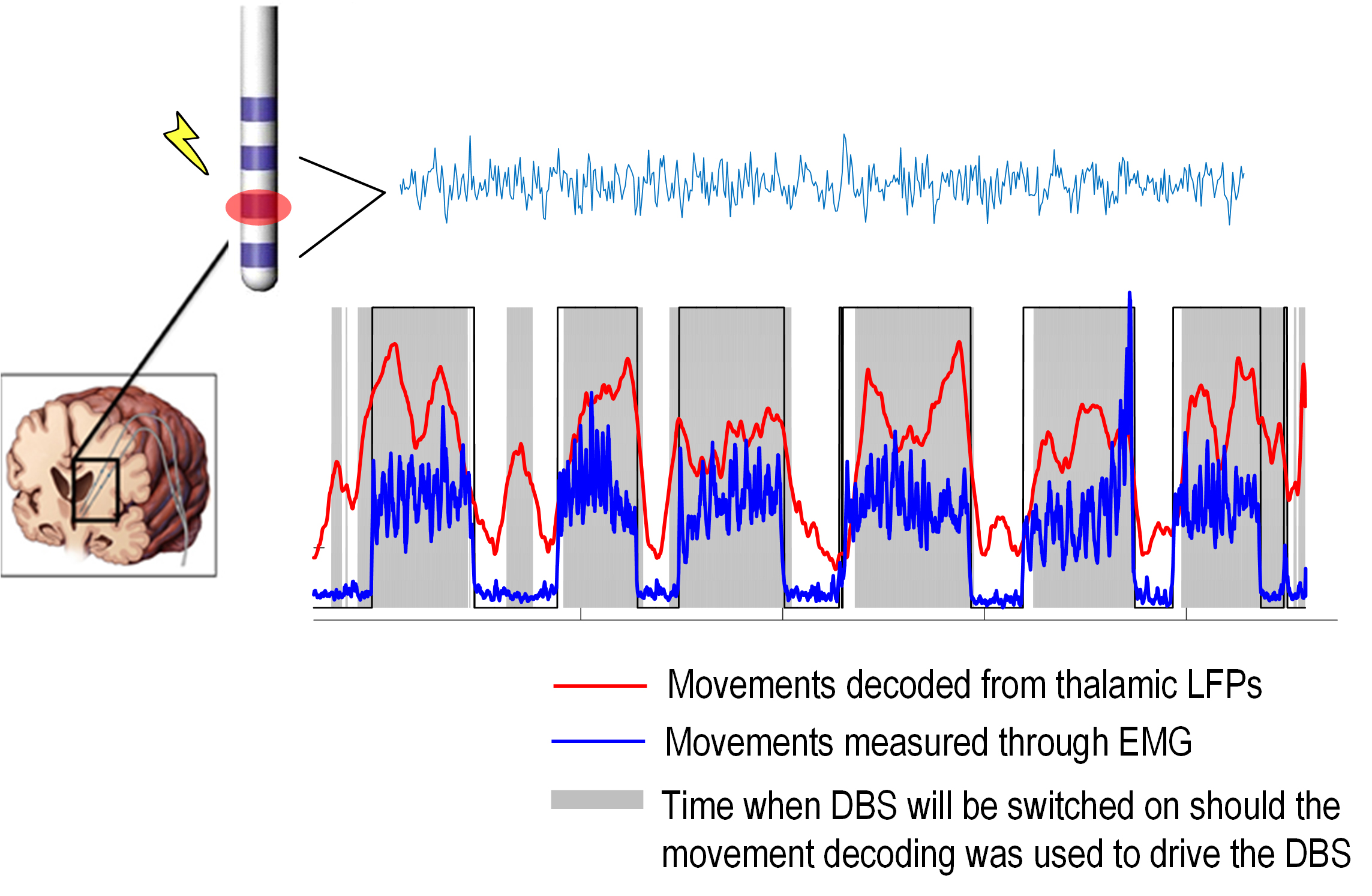Decoding voluntary movements and postural tremor based on thalamic LFPs as a basis for closed-loop stimulation for essential tremor.
Essential Tremor mainly affects voluntary movements and sustained postures. Here, we show that the voluntary movements and postural shaking of people affected by Essential Tremor can be decoded using nerve cell activity recorded in a part of the brain called motor thalamus. This information can potentially be used to improve brain stimulation as a treatment for Essential Tremor, so that stimulation could be delivered on demand.
Background: High frequency Deep brain stimulation (DBS) targeting motor thalamus is an effective therapy for essential tremor (ET). However, conventional continuous stimulation may deliver unnecessary current to the brain since tremor mainly affects voluntary movements and sustained postures in ET.
Objective: We aim to decode both voluntary movements and the presence of postural tremor from the Local field potentials (LFPs) recorded from the electrode implanted in motor thalamus for stimulation, in order to close the loop for DBS so that stimulation could be delivered on demand, without the need for peripheral sensors or additional invasive electrodes.
Methods: LFPs from the motor thalamus, surface electromyographic (EMG) signals and/or behavioural measurements were simultaneously recorded in seven ET patients during temporary lead externalisation 3–5 days after the first surgery for DBS when they performed different voluntary upper limb movements. Nine different patients were recorded during the surgery, when they were asked to lift their arms to trigger postural tremor. A machine learning based binary classifier was used to detect voluntary movements and postural tremor based on features extracted from thalamic LFPs.
Results: Cross-validation demonstrated that both voluntary movements and postural tremor can be decoded with an average sensitivity of 0.8 and false detection rate of 0.2. Oscillatory activities in the beta frequency bands (13–23 Hz) and the theta frequency bands (4–7 Hz) contributed most to the decoding of movements and postural tremor, respectively, though incorporating features in different frequency bands using a machine learning approach increased the accuracy of decoding.

2025. Brain, 148(6):2093-2107.
2021. J Neural Eng, 18(4):046023.